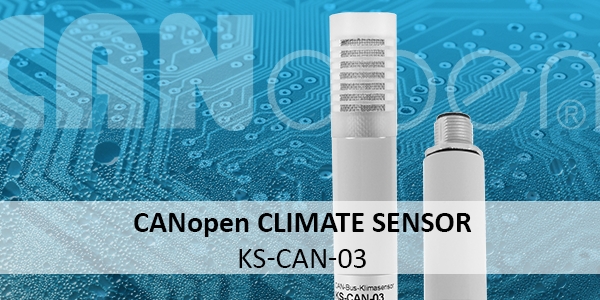
- Written by ZILA GmbH
- font size decrease font size increase font size
CANopen climate sensor KS-CAN-03: Combined temperature and humidity sensor with CAN bus signal output
Depending on the application, the sensor elements can be integrated into various robust and compact designs. These range from simple plastic and synthetic housings to rod sensors with stainless steel housings. Furthermore, different output signals can be selected for climate sensors. In addition to the two analogue standard output signals 4...20mA and 0...10V, the CAN bus system is particularly noteworthy in the automotive and transport sectors as well as for (mobile) machines. This is exactly what makes our climate measurement sensors a flexible component in machine and plant construction.
CANopen bus climate sensor KS-CAN-03

With the KS-CAN-03, ZILA offers a rod-shaped climate sensor in an anodised aluminium housing for measuring relative humidity and temperature indoors and outdoors. This sensor, which is based on the CANopen protocol, has no mechanical adjustment elements. The calibration values are stored digitally, giving this sensor excellent long-term stability.
The KS-CAN-03 operates on the CAN protocol standard CANopen 2.0A and uses the physical layer according to DIN 11898 (high-speed CAN up to 500kBaud). Short response times due to its gauze cap and miniature sensor element and features such as LSS slave for setting the node ID and baud rate, as well as node guarding, make this CAN bus climate sensor a flexibly configurable product with an excellent price-performance ratio.
Advantages
- Cost savings through prevention of downtimes
- Temperature measurement from -40...80°C and relative humidity measurement in the range of 0...100% rH
- High measuring accuracy
- CAN bus interface and CANopen protocol
- Compact and robust design for industrial use
- Easy integration into new and existing plant and control concepts
Technical data at a glance
| Sensor element |
Relative humidity sensor |
Temperature sensor |
|
|
|
